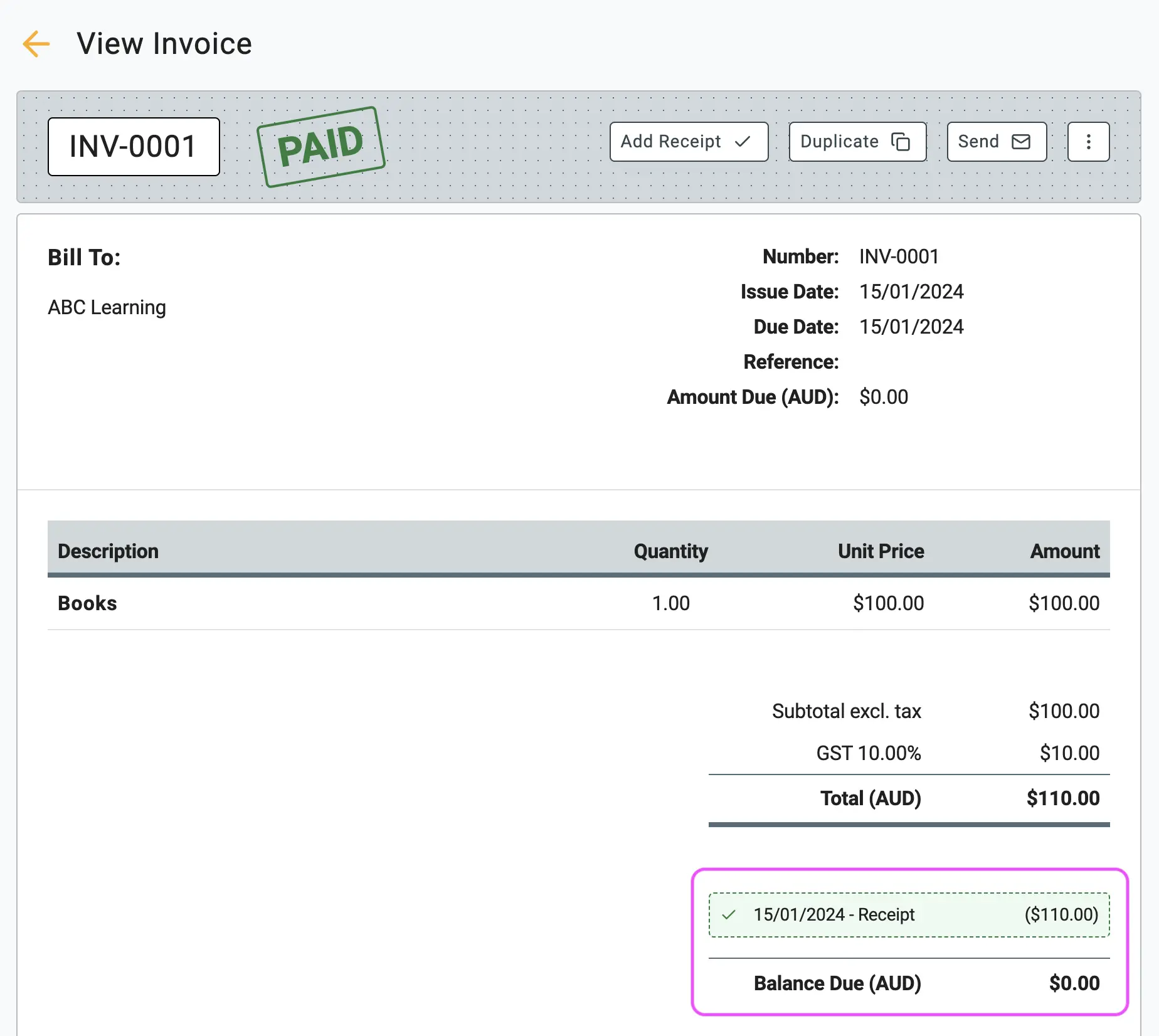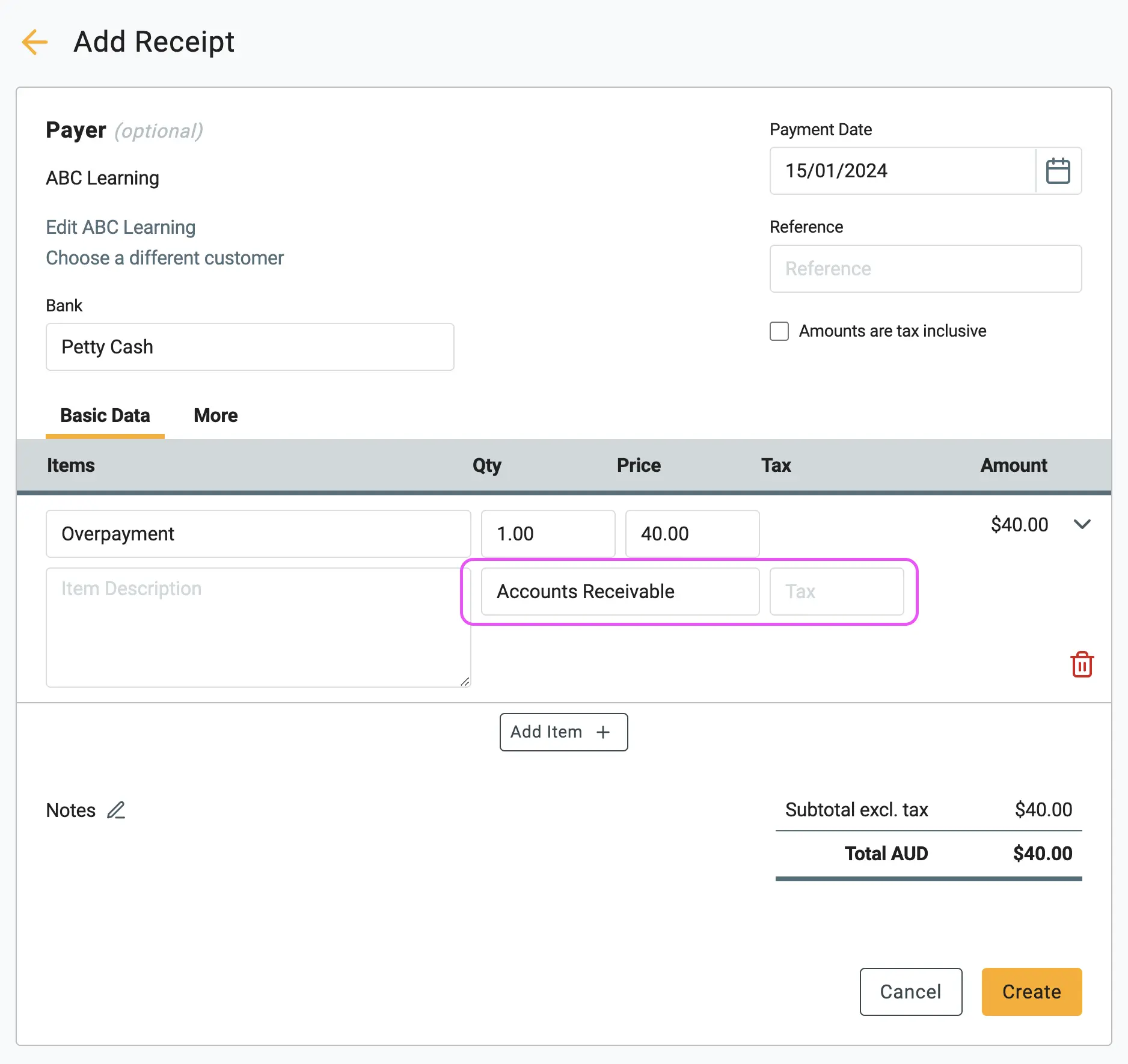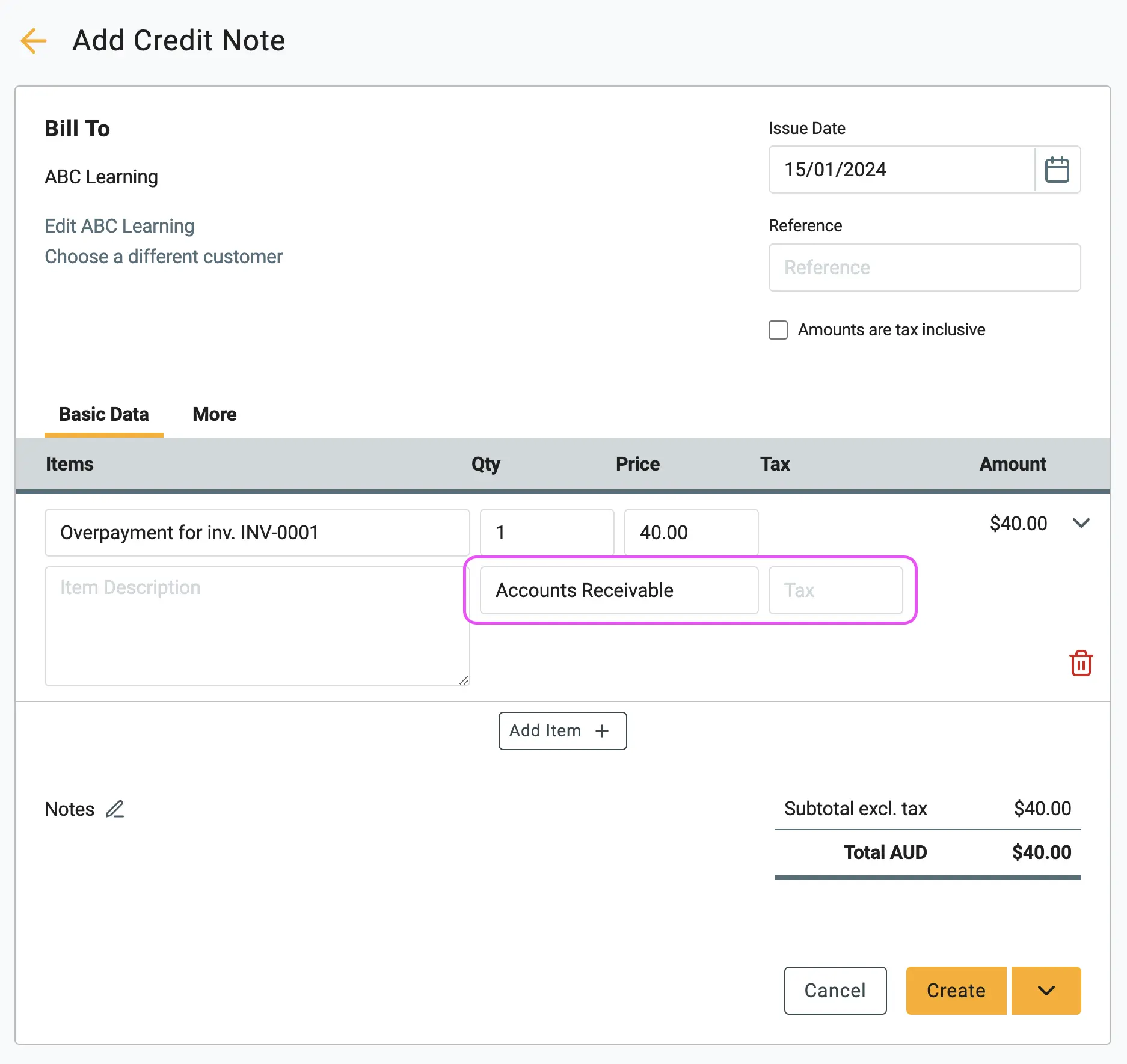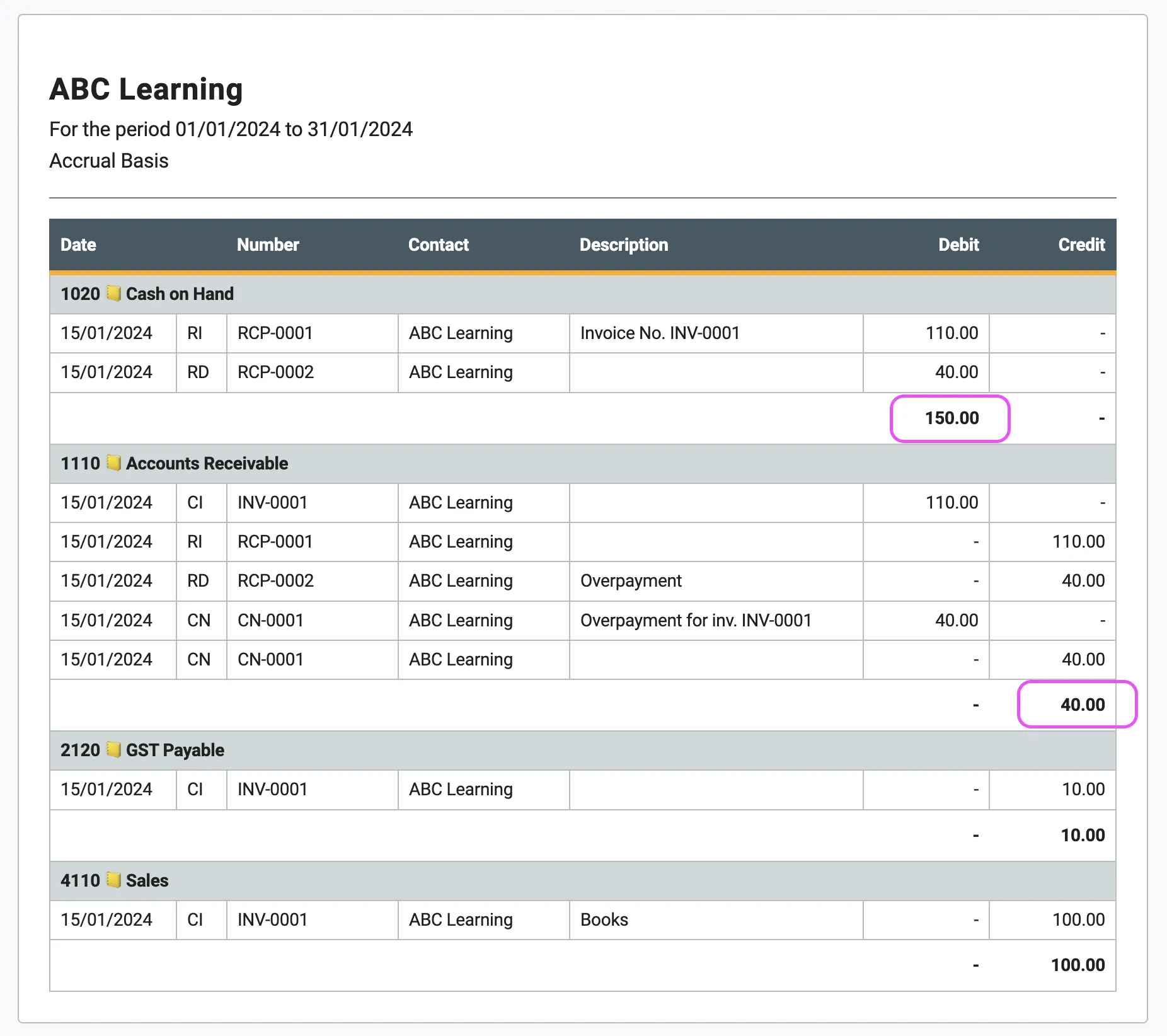Record an overpayment
This guide will walk you through how to manually handle overpayments in your Gimbla account.
An overpayment occurs when a customer remits an amount exceeding the
invoiced sum. While there is no dedicated overpayment
button,
you can manage this by recording the excess cash and balancing the ledger
with a credit note. This ensures your bank balance matches reality while
keeping your tax reporting accurate.
🧭 Navigate To
👣 Walkthrough
For this example, we assume a customer has paid $150 for a $110 invoice, resulting in a $40 overpayment.
1 First, locate the original invoice (e.g., $110). Record the
full payment amount of $110 against this invoice as you normally would
to mark it as Paid.

2 Next, record the extra cash. Create a Receipt for the remaining overpayment amount ($40) using the direct receipt method. In the line items, select the Accounts Receivable account and — most importantly — leave the Tax Code field blank.

3 To offset the entry from Step 2 and create a credit for the customer, add a Credit Note for the overpayment amount ($40). Use the same Accounts Receivable account here as well.

4 You can now conclude the process. Open the Credit Note you just created and choose to either Refund the customer the cash or Apply to an Invoice to cover outstanding or future bills.

🖇️ Notes
Take a minute to understand the accounting implications and how to handle this for suppliers. A brief description of the key points follows:
- Tax Warning – Overpayments are not subject to taxation and should not be treated as revenue for services yet to be performed. It is vital that you select the Accounts Receivable account and leave the Tax Code blank during these steps. This ensures the value increases the Balance Sheet instead of the Profit & Loss.
- General Ledger – After completing these steps, your Bank Account will reflect the total cash increase ($150), and Accounts Receivable will display the correct balance adjustments.
- Supplier Overpayments – If you have overpaid a supplier, simply reverse this process: Use Accounts Payable instead of Accounts Receivable, and create a Debit Note instead of a Credit Note.